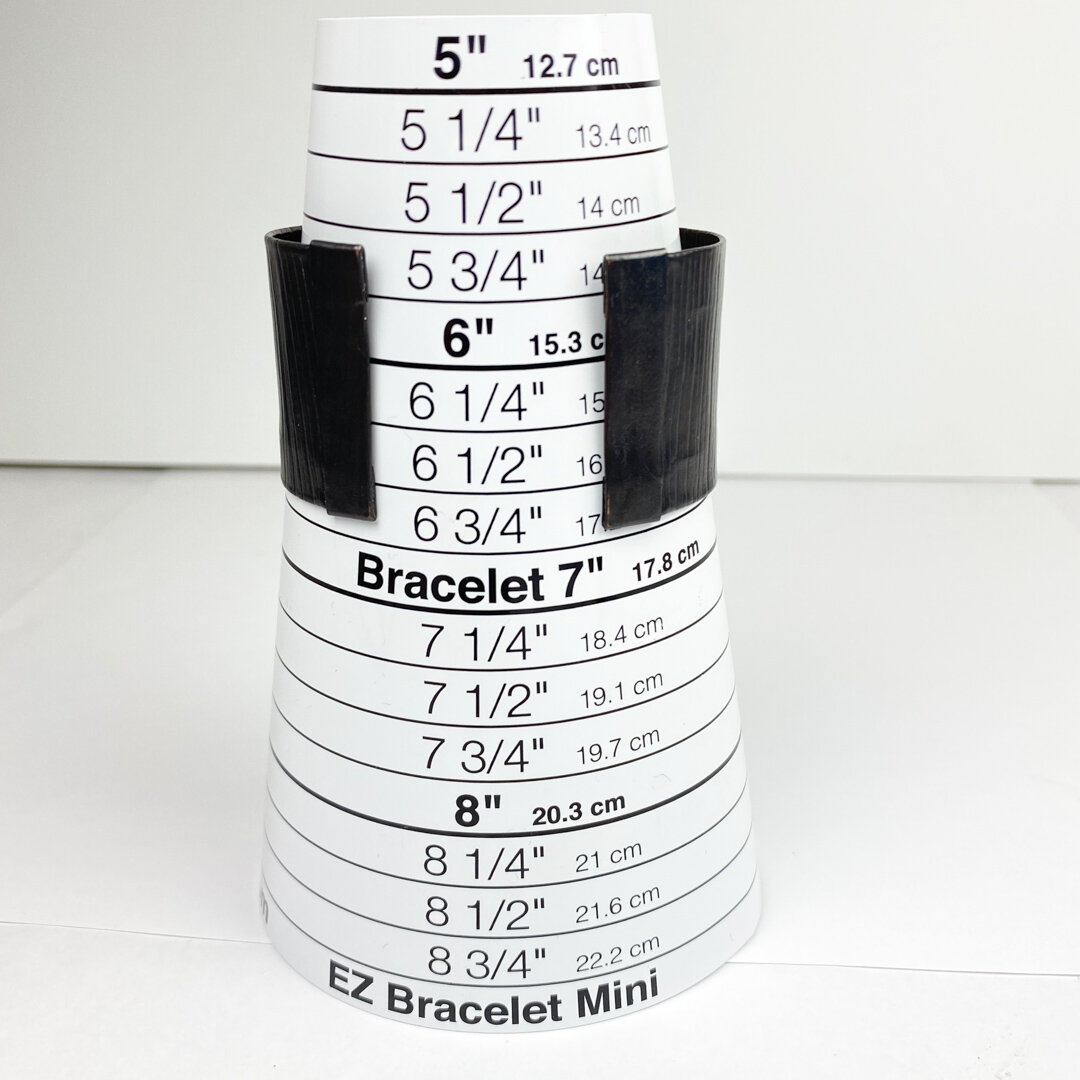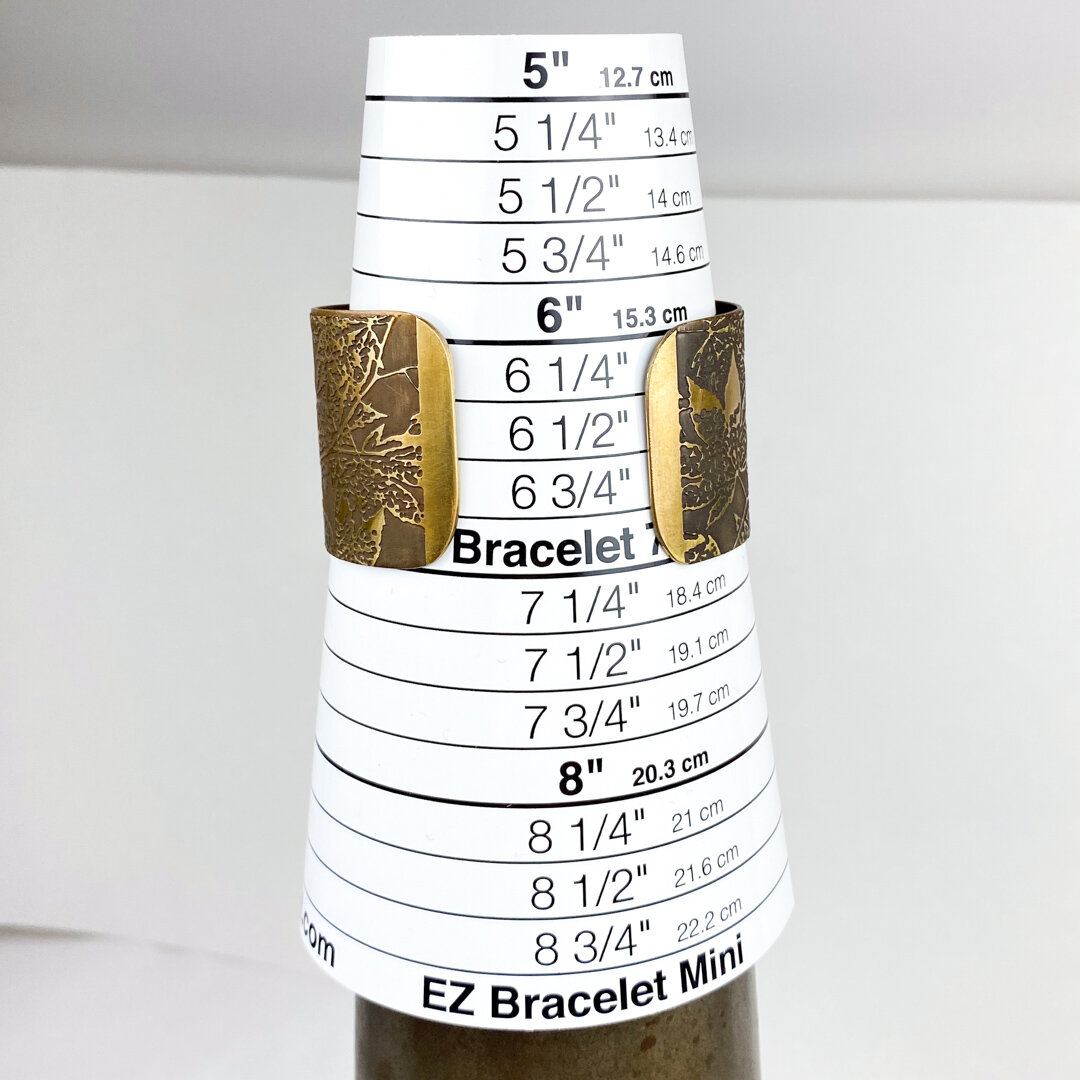Sizing bracelets
A bracelet can be a cuff, a bangle, a chain made of links only, a chain of linked elements such as beads… basically something worn on the wrist. Like rings, they need to be a proper fit for the wearer in order to be both comfortable and secure. Below are some instructions for measuring to insure the correct size is selected. The wrist size is generally measured over the wrist bone with a tape measure. For a bangle that must slip over the hand, the relevant measurement is the widest area of the folded hand.
Finished cuffs and bangles are generally sized using a ruler to measure inside dimensions. Chain lengths are also measured with a ruler. The three common sizes considered standardized are small, medium and large. Size details are included with description of the item.
Measuring the wrist over the bone.
Sizing Cuffs
Cuffs can be made from heavy wire or thinner sheet metal. They have a rounded oval shape with an opening size that allows for ease of wear. A properly made and sized cuff should never require opening and closing by stretching and pinching the opening. This work hardens the metal to a point it can eventually crack or break. The standard opening length is 1”. More or less would be needed for tiny or very large cuffs.
Finished cuff sizes can be measured in several ways. First by the length of the metal blank before it is formed, secondly by using a ruler to measure the widest point of the oval, and thirdly with the help of a special paper cone with inches marked. Note that most wrists are more oval shaped than round… although there are some that are nearly round. These photos show the three “average” sizes of cuffs that I make. So far, I haven’t made very small or very large sizes.
small/medium
This cuff was 6” long before it was formed. It now has a circumference of about 6 3/4” including the 1” gap.
medium
This cuff started with a 6” 1/4” blank. The finished cuff has approximately a 7” circumference including the 1” gap.
large/medium
This cuff started as a 6 1/2” blank. The finished cuff has about a 7 1/4” circumference including the 1” gap.
This small/medium cuff is 2 1/4” at widest point
One inch is considered a standard opening for most sizes.
Anything over 1” wide is considered a wide cuff.
Sizing a bangle
A bangle should slip over the folded hand but not be so loose as to slip off the opened hand easily. The easiest method for determining your best size for a bangle is to measure one you already own and wear comfortably. My bangles are always round (never oval or square) and listed measurements are for the inside diameter.
Measuring inside diameter
Measuring the inside circumference








